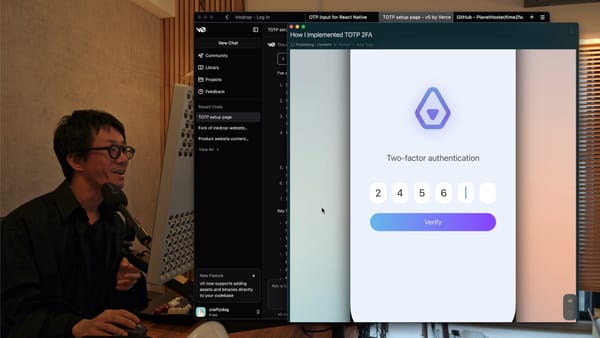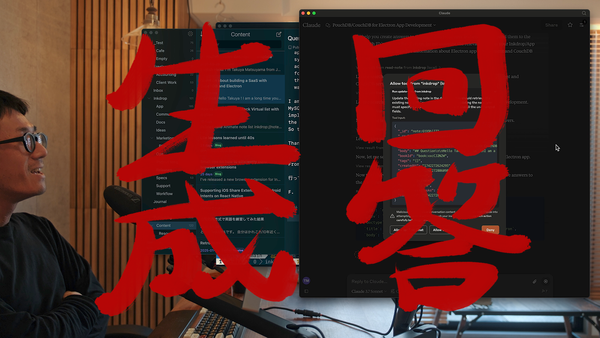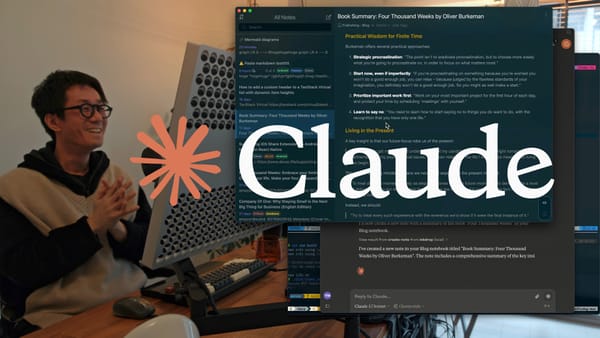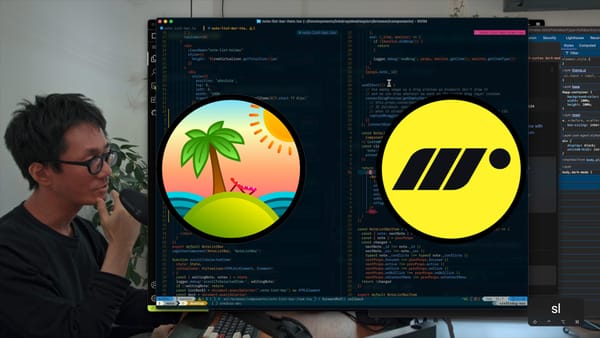What inspirations I got this week from Nō, Andy Warhol, Gutai, and Hideo Kojima
能楽, アンディー・ウォーホル, 具体, 小島秀夫
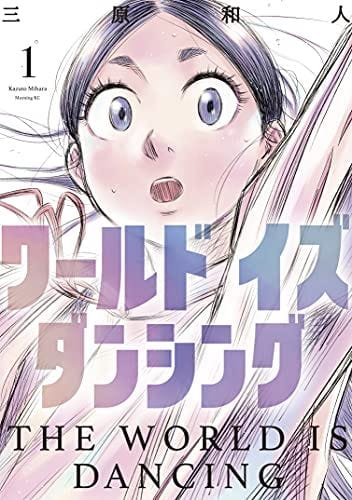
Getting inspirations from Nō, Andy Warhol, Gutai, and Hideo Kojima
ワールド・イズ・ダンシング (The World is Dancing)
- ワールド イズ ダンシング(1) (モーニングコミックス)
- Not available on Amazon US
It’s a story based on the life of Muromachi-period actor Zeami Motokiyo(世阿弥元清).
What is nō (能)
- Ref: Introduction to nō
Nō is a traditional Japanese performing art combining chant, music, dance, acting, as well as masks and costumes. Nōgaku(能楽) comprises of two stage arts: nō, based on chant and dance, and kyōgen, its comedic counterpart, based on dialogue. Nō has been transmitted uninterruptedly for over six centuries. Playwright and performer Zeami Motokiyo (1363–1443) perfected the art of nō creating a unique blend of dramatic action, dance, and poetry. Since then, nō has been patronized by the aristocracy and, more recently, by the general public. Today, nō is considered as one of the most important forms of traditional Japanese culture. Nō may appear simple, but each of its elements has been refined over the centuries to reach today’s form.
The ultimate minimalism
能 = Nō はたらき = System, how it works, structure, etc.
I guess 能 means how life interacts with the world, and vice versa. Zeami(世阿弥) tried to surrender/eliminate(=明け渡す) everything except for 能, including himself(私), expression using masks(面), slowing down the dance to the world and stage.
Andy Warhol at Kyoto City KYOCERA Museum of Art
Andy Warhol drew inspiration from images of popular culture and consumerism and was a leading figure of New York City’s Pop Art movement starting from the early 1960s.
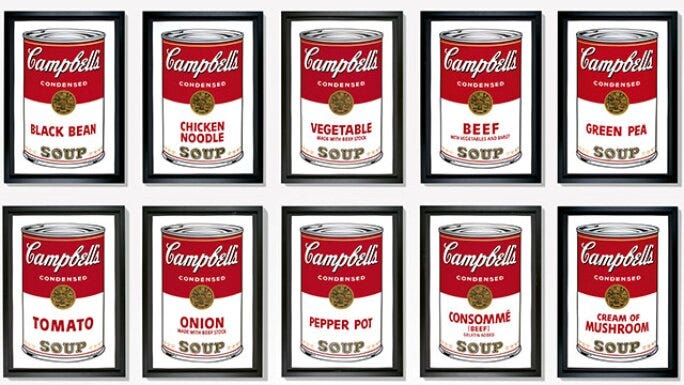
1950年代の終わり頃、ウォーホルは絵画制作に打ち込むようになる。とりわけ惹かれたのは、50年代半ばにイギリスで始まったポップ・アートの動向だった。ポップ・アーティストたちは、大衆文化から インスピレーションを受け、広告や報道写真のイメージをそのまま自分たちの作品に取り入れた。1961年、ウォーホルは漫画や広告のイメージをもとに初のポップ絵画を制作する。キャンベル・スープエの赤と白のラベルは、アメリカ人には馴染みのイメージであり、キャンベル・スープを食べることは、社会的な地位や経済力に関係なく誰もがスープを食べるという、広く共有された経験だった。 ウォーホル自身、「ポップ・アートとはモノを好きになることだ」と語り、20年ものあいだ毎日キャンベル・スープを食べ続けたという。
By the end of the 1950s, Warhol began to devote more energy to painting. He was drawn to the Pop art movement, which began in Britain in the mid-1950s. Pop artists were inspired by popular culture, taking images directly from advertising or newspaper sources for their artworks. In 1961. Warhol created his first Pop paintings based on comics and ads. The familiar red-and-white label of a Campbell’s Soup can was immediately recognizable to most Americans and eating Campbell’s soup was a widely shared experience — everyone ate soup regardless of social or economic status, Warhol himself said, “Pop art is about liking things,” and claimed that he ate Campbell’s Soup every day for twenty years.
Shadows I
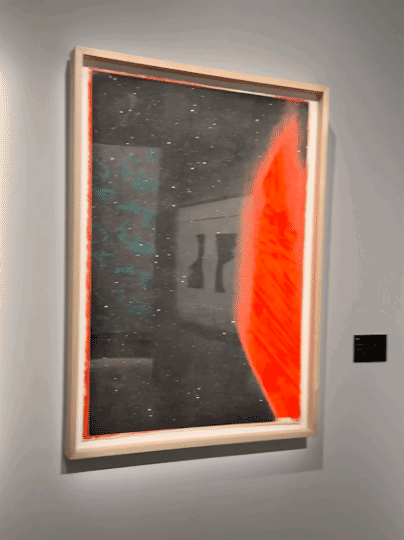
A screenprint in colors with diamond dust, 1979.
It sparkles depending on the angle at which it is viewed.
GUTAI at Nakanoshima Museum of Art
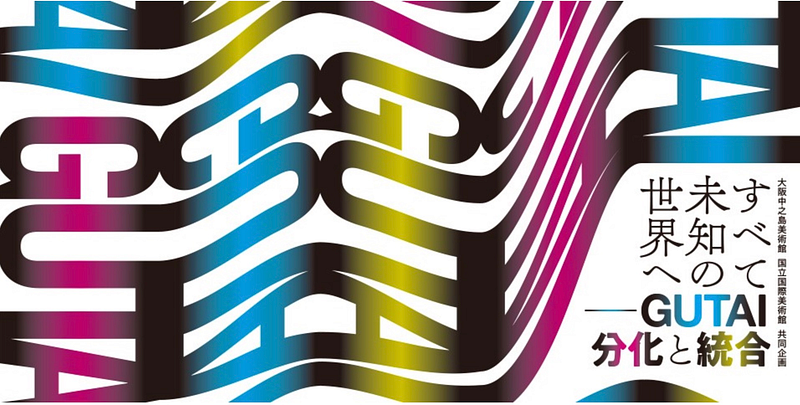
- すべて未知の世界へ ー GUTAI 分化と統合 | 大阪中之島美術館
- Into the Unknown World — GUTAI: Differentiation and Integration | Nakanoshima Museum of Art, Osaka
The Gutai Art Association (Gutai) was a collective of artists established in Ashiya (in Hyogo Prefecture, close to Osaka) in 1954. Painter Yoshihara Jiro (1905–72) was the central figure in the association. Through painting and a variety of other practices, the Gutai artists set out to express themselves freely without being confined to existing precedents. Today, Gutai is regarded as origin of Post-war Japanese art, also known as almost like a legend of that period and has finally attained national and international prominence that it deserves. This exhibition takes a fresh look at Gutai’s trajectory from two perspectives: differentiation and integration. This approach has some commonalities with the Gutai attitude of attempting to be a coherent collective while individually producing different work that does not fall into the trap of imitating someone else’s art. This follows Yoshihara’s view that art should ideally involve the human spirit and matter shaking hands but remaining apart.
Gutai has always had a reputation for innovation and creativity. Yoshihara Jiro’s succinct exhortation to “Do what no-one has done before!” has come to symbolize that approach. The phrase is often quoted, but but the true details of Gutai’s innovation and creativity are not generally known.
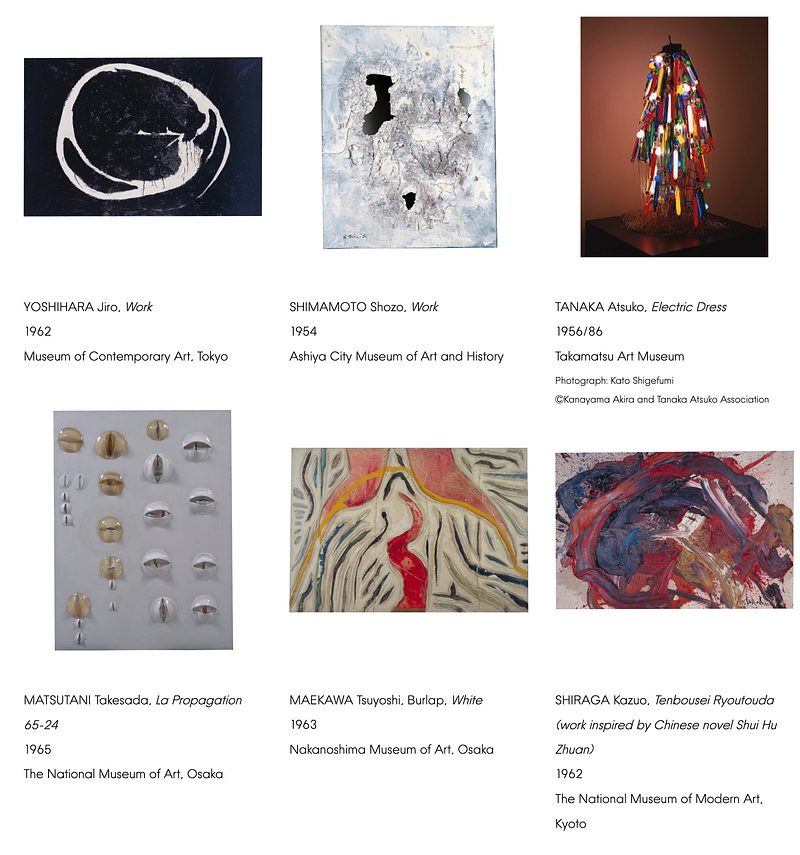
吉原治良は説明を嫌う 一 吉原が説明を嫌うということはすなわち、具体が説明を嫌う、という意味であると受け取ってさしつかえないでしょう。吉原のもとに繰り返し自作を持ち込む中、ながながと説明でもしようものなら、たちまち遮られたといいます。その断固とした説明拒絶の姿勢は、具体の作品に付されたタイトルにも容易にみてとることができます。具体の作品タイトルのほとんどは、く作品>、く無題>あるいはくUNTITLED>。タイトルでさえ、作品の説明となりうるものは徹底的に排除の対象となったのです。
Yoshihara Jiro hated explanations. But this should not be taken to mean that all of the Gutai artists hated them. When one of them brought a work to show Yoshihara and launched into a lengthy explanation, he was known to immediately shut them down. This steadfast refusal to explain is also readily apparent from the group’s practice of leaving their works untitled. Almost all of Gutails works are titled Sakuhin (Work), Mudai (Untitled) or UNTITLED. Even the titles were eliminated to avoid anything that might serve as an explanation.
I can see the common idea shared by Nō and Gutai. Both tried to add new essences while simultaneously eliminating unnecessary ones.
The Creative Gene: How books, movies, and music inspired the creator of Death Stranding and Metal Gear Solid — Hideo Kojima
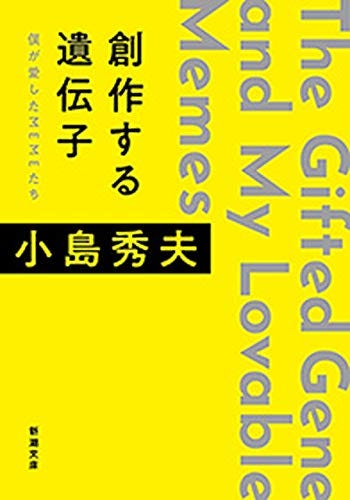
Metal Gear Solid and Death Stranding creator Hideo Kojima was a voracious consumer of movies, music, and books.
The intermediaries of those connections are memes, a concept introduced by the evolutionary biologist Richard Dawkins. Whereas genes are biological in nature, memes are units of information such as a cultural ideas, customs, and values — that are spread between people and passed on to future generations. I think stories could be fairly described as memes given form. As stories are passed from one generation to another, and as they are written and read, culture is carried forward. Like genes are passed on through a connection between one person and another, memes are passed on through a connection between a person and a book or a film.
今日という日が、永遠に今日のままならば、過去のデータに基づいたマーケティング的なモノづくりでいいのかもしれない。だが、明日は必ず来る。過去のものがそのまま通用するはずがない。昨日の経験は、選択肢のひとつでしかない。昨日がこうだったから、今日もこうだということは絶対にない。 (…) 昨日までの経験があるから、新しい繫がりを結ぶことに確信が持てる。だからこそ僕は、本を読み、映画を観て、音楽を聴く。美術館や博物館に行く。
He doesn’t rely on past successes, because it is not reasonable to expect that what worked in the past will automatically work now. Yesterday’s experience is just one of many options. It is absolutely not true that just because something happened yesterday, it will happen the same way today
This is similar to what Yoshihara Jiro and Gutai did.
ME+MEの「+」が、繫げるという行為がなければならない。
He emphasizes the importance of connecting with others (Me+Me).
人は、自分にない物を持っている人を好きになる。恋愛もそうだし、友人の関係を結べるのも、それが根本にある。作品もそうだ。
“People tend to like those who have what they themselves lack. This is true of love and friendships, and it is also the root of why we appreciate works of art.”
Less is sustainable, connecting with others helps you discover novel ideas, and love is key
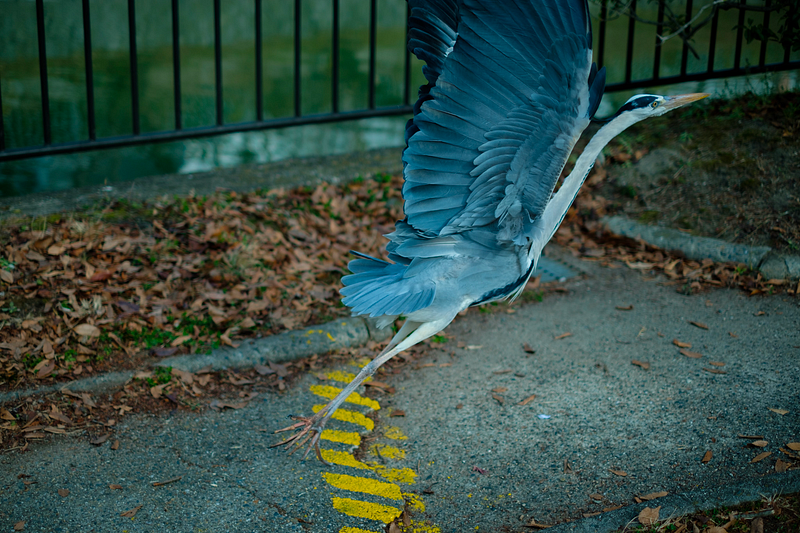
- Less lets you focus on what trully matters.
- Less also lets others focus on what trully matters.
- As a result:
- Less makes your work bold.
- Less makes your work sustainable.
- Connecting with others helps you discover novel ideas
- What no-one has done before
- Love
- Creation is about liking things
- Learn from people who have what you yourself lack (Me+Me)

